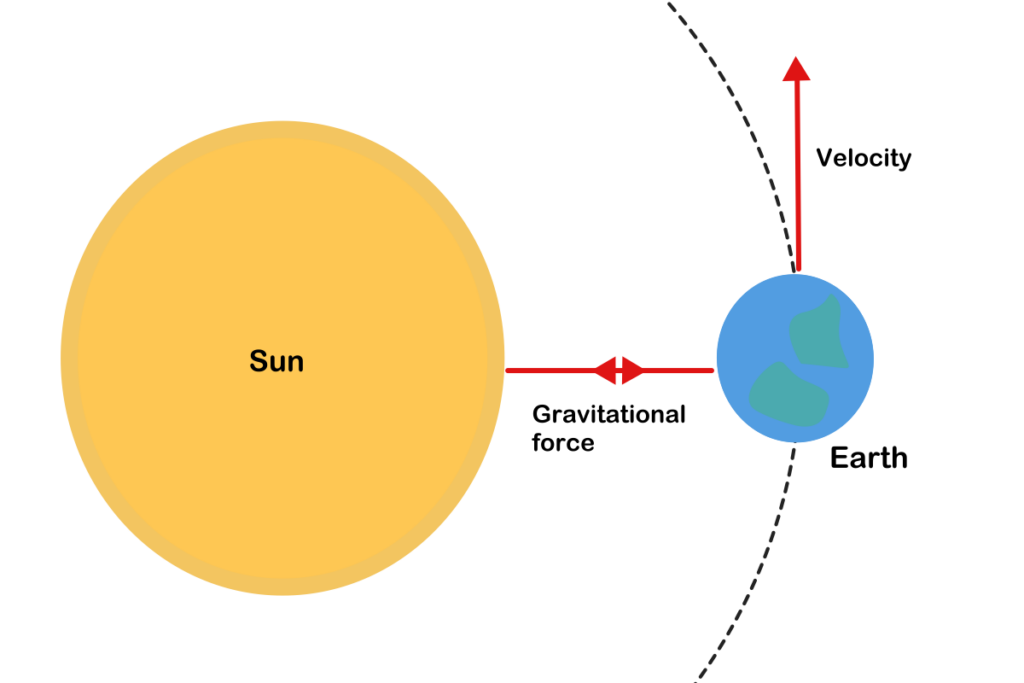Last Reviewed and Updated on August 8, 2022
With everything in space being in motion, one can wonder, is the Earth moving away from the Sun, or is it getting closer? Let’s take a closer look at what is happening within our Solar System as time passes by.

Earth’s Orbit
Let’s first take a look at where we are at and why we are where we are.
Earth makes a full orbit around the Sun in about 365 days. The distance of the orbit is roughly 92.96 million miles / 149.60 million km. This means Earth is traveling at an impressive average speed of 66,616 mph / 107,208 km/h.
The way Earth and other planets move around the Sun is described by the three Kepler’s laws of planetary motion.
In short, they state that the planets move in elliptical orbits with the Sun as a focus. The speed of planets closer to the Sun is faster, and if you know the period of a planet’s orbit, you can determine the planet’s distance from the sun.
Also read: interesting facts about the planet Earth
But why is Earth’s orbit at a distance it’s currently at?
Both the order and arrangement of planets in our Solar system are most likely due to the way the solar system was formed. The leading theory suggests planets formed by particles colliding and sticking together as they orbited the sun. Most heavier elements were closer to the sun (hence planets near the sun are terrestrial) and lighter elements further from the sun (hence outer planets are gas giants).
The theory speculates as planets formed, they attained their velocity and the direction of it either from the building particles or in addition to that by being struck by other objects from space.
Earth, like every other planet, has its own velocity. Remove the Sun, and the planets would move in a straight line. The gravitational pull of the Sun and the velocity (which is perpendicular to gravity) of the planet balance themselves, keeping the planets in their orbits.

The closer to the Sun the planet is, the stronger the gravitational pull. And more velocity is needed to balance it out to not be pulled in by the Sun (Kepler’s law about planetary motion makes sense now).
If a planet would miraculously lose its velocity, it would be pulled in by the Sun’s gravity.

Is the Earth moving away from the Sun?
Now you have a very basic idea of how things move in our Solar System. So is the Earth moving away from the Sun?
In order for this to happen, the gravitational pull of the Sun must decrease.
Astronomers have been studying the motion of planets for centuries as well as diving deep into solar science. Einstein’s most famous formula, E=mc2, gives the first hint. Sun is giving out a lot of energy. The mass of the body is the energy content of the body, so as the energy goes out, the mass decreases. Sun is constantly losing its mass. Solar winds also add up to the loss of mass.
The gravitational pull of an object is directly tied to the mass of an object. The greater the mass, the greater the strength of the gravitational pull. As the Sun is losing mass, its gravitational pull is becoming weaker.
In the grand cosmic scale of things, the weakening of gravitational pull is neglectable. It is still enough to cause the Earth to move away from the Sun. The rate at which the Earth is moving away from the Sun is estimated to be roughly an inch / 1.5 cm per year.
There are other effects that play their part in the Earth moving away from the Sun, but their effect is minimal.
Be sure to also read this list of 100 space facts.
